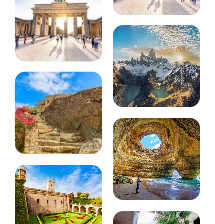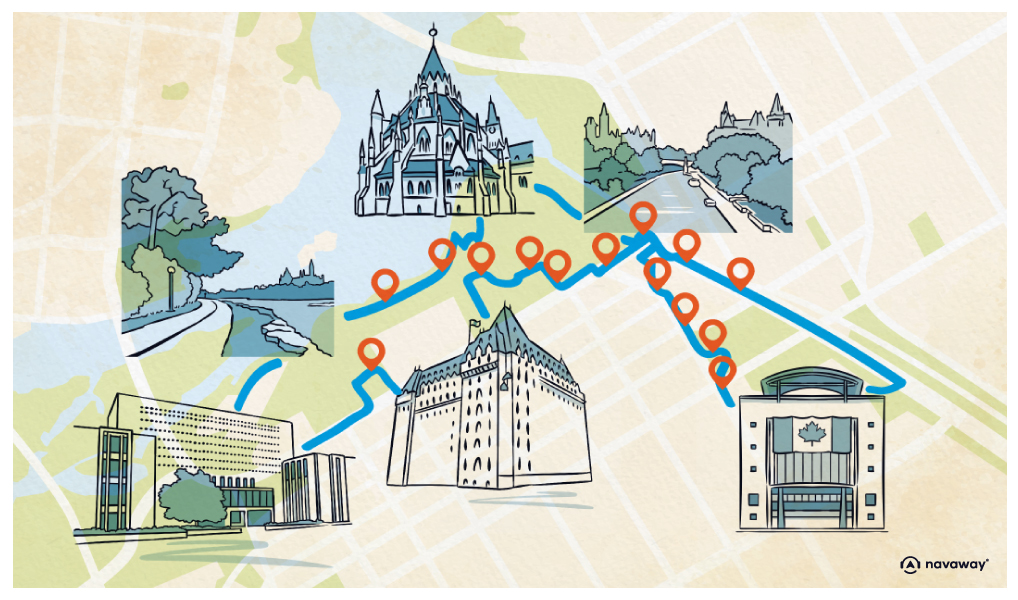
The 20 largest countries in the world by surface area

Our planet Earth, with its 510.1 million km², is home to an incredible diversity of nations of varying sizes. From the immense expanses of the Siberian tundra to the vast deserts of Australia, some countries stand out for their extraordinary size. These terrestrial giants alone account for a considerable proportion of the world’s land mass. Of the 195 internationally recognised countries, around twenty stand out for their exceptional size. Discover the fascinating ranking of the 20 largest countries in the world by surface area, nations that stretch for thousands of kilometres and are home to landscapes of incomparable richness.
1. Russia: the Eurasian giant covering 17,098,242 km².
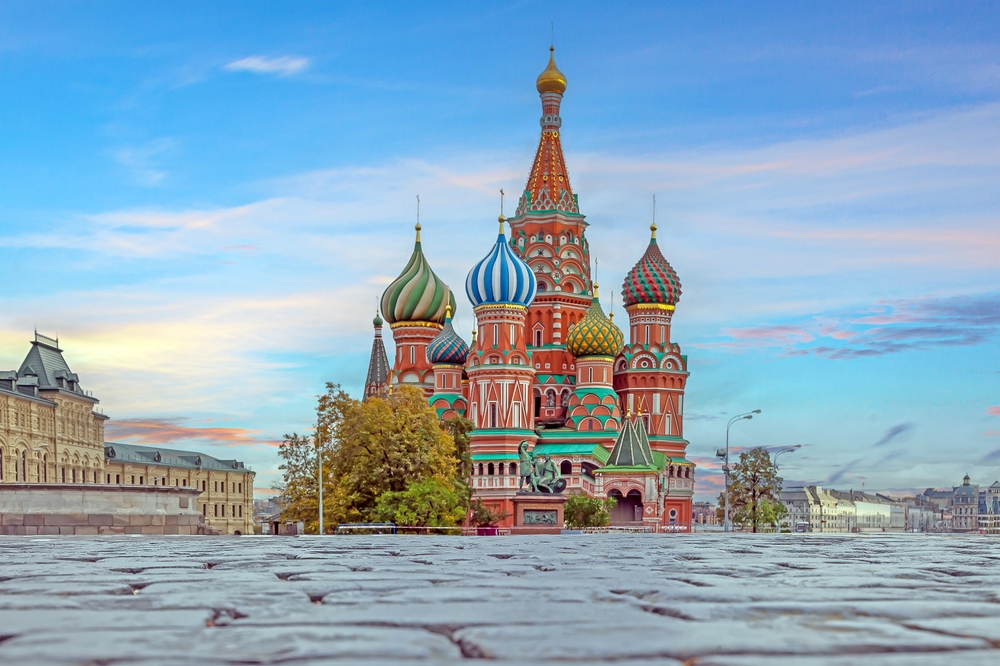
Russia unquestionably dominates this ranking of the world’s largest countries, with a total surface area of 17,098,242 km², representing around 11.5% of the planet’s habitable surface. This transcontinental country stretches majestically from Eastern Europe to Northern Asia, crossing no fewer than 11 time zones. To put this size into perspective, Russia is 26 times larger than France, yet home to only three times the population of France.
The Russian territory encompasses a staggering geographical diversity: the Siberian taiga, the endless steppes, the Ural mountain ranges separating Europe from Asia, and the vast coastlines overlooking the Arctic Ocean, the Pacific Ocean and the Baltic Sea. From Moscow, its historic capital, to Vladivostok on the Pacific coast, you have to travel more than 9,000 kilometres. This vastness makes Russia the largest country in the world since the dissolution of the Soviet Union in 1991.
2. Canada: 9,984,670 km² of wilderness
Canada comes second in this ranking of the world’s largest countries, with a surface area of 9,984,670 km², or 6.7% of the earth’s habitable surface. This former British colony stretches from the Atlantic Ocean to the Pacific Ocean, and as far north as the Arctic Ocean. Renowned for its exceptional quality of life, Canada is home to some of the most beautiful national parks on the planet.
Canada is a land of immense boreal forests, thousands of lakes (the country has over 2 million), spectacular Rocky Mountains and Arctic tundra. From Vancouver on the Pacific coast to Toronto on the shores of Lake Ontario, via Montreal and the federal capital Ottawa, Canada offers a mosaic of grandiose landscapes. The country is also famous for its maple syrup, its harsh winters and its welcoming population, spread mainly along the American border.

3. United States: 9,833,517 km² of diversity
The United States is the third largest country in the world, with a surface area of 9,833,517 km², representing 6.4% of the world’s habitable surface. This global superpower stretches from the Atlantic to the Pacific, including the 48 contiguous states, Alaska in north-western Canada, and the Hawaiian archipelago in the Pacific Ocean.
The American territory offers extraordinary geographical diversity: the Appalachian mountain ranges to the east and the Rocky Mountains to the west, the agricultural Great Plains of the Midwest, the arid deserts of the Southwest, the bayous of Louisiana and the rainforests of Alaska. Megacities such as New York, Los Angeles, Chicago and the federal capital Washington D.C. stand side by side with natural areas preserved in 63 national parks. This vast territory makes the United States one of the largest countries in the world and a must-see destination for all travellers.

4. China: 9,596,961 km² of ancient history
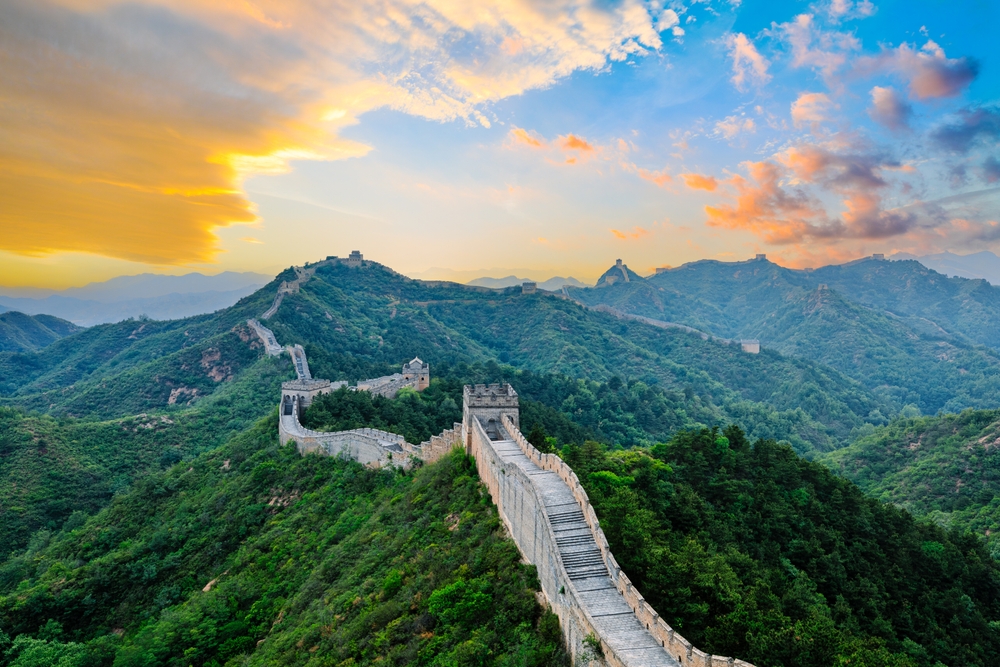
The People’s Republic of China is the fourth largest country in the world, covering an area of 9,596,961 km². The Middle Kingdom is a complex collection of provinces, autonomous regions and special municipalities, which together form the most populous nation on the planet, with over 1.4 billion inhabitants.
China’s geography is exceptionally rich: the imposing Tibetan plateau, the Taklamakan and Gobi deserts, the Great Wall winding over 20,000 kilometres, the rice terraces of the south, and the ultra-modern megacities of the east. From Beijing, the political and cultural capital, to Shanghai, the economic powerhouse, via the special administrative regions of Hong Kong and Macao, China fascinates through its contrasts. Taiwan’ s status remains special in this complex geopolitical picture.
5. Brazil: 8,515,767 km² of tropical forests
Brazil is the fifth largest country in the world, with a total surface area of 8,515,767 km², or 5.7% of the earth’s habitable surface. This Portuguese-speaking nation dominates South America geographically and is the continent’s most developed economic power in terms of infrastructure and industry.
Brazil is home to the Amazon, the planet’s green lung, which covers almost 60% of the country, the Pantanal (the world’s largest wetland), the spectacular Iguaçu Falls, and over 7,000 kilometres of coastline lined with heavenly beaches. From Brasília, the futuristic capital inaugurated in 1960, to Rio de Janeiro dominated by Christ the Redeemer, via São Paulo, the economic megalopolis, and Salvador de Bahia, the cradle of Afro-Brazilian culture, Brazil vibrates to the rhythm of samba and carnival. This South American giant is undoubtedly one of the biggest countries in the world.
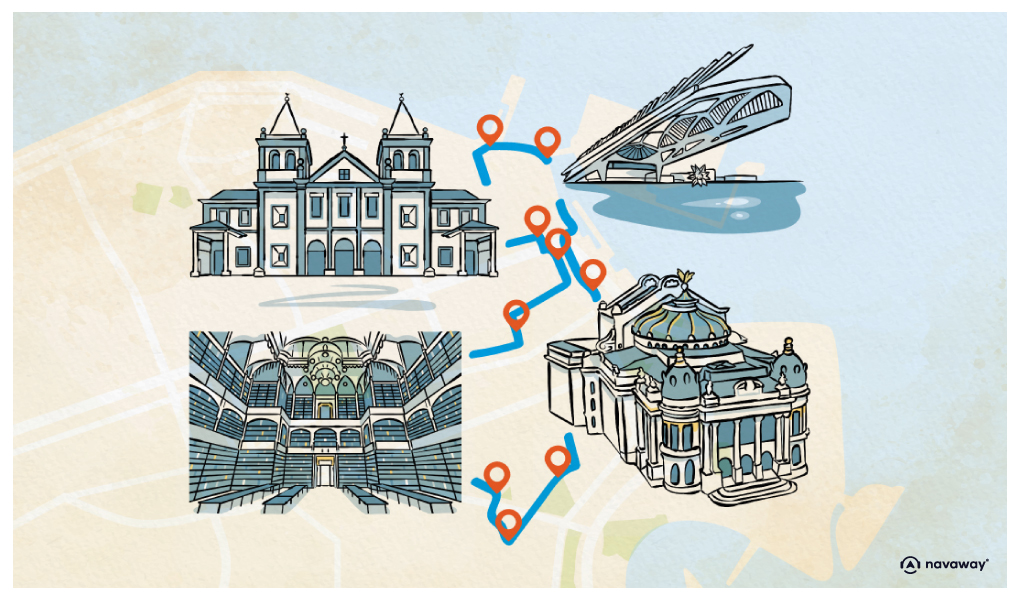
6. Australia: 7,692,024 km² of isolation
Australia is the sixth largest country in the world, with a surface area of 7,692,024 km², representing 5.2% of the world’s habitable surface. This island country-continent in the southern hemisphere is fascinating for its geographical isolation and its unique wilderness, home to an extraordinary endemic fauna including kangaroos, koalas, wombats and Tasmanian devils.
The Australian territory is characterised by the immense red desert of the Outback that occupies the centre of the country, the Great Barrier Reef (the largest coral reef in the world) along the Queensland coast, the tropical forests of the north and the surf beaches of the east coast. The population is concentrated mainly in the coastal cities: Sydney with its iconic opera house, Melbourne, the cultural capital, Brisbane, Perth isolated in the west, and Canberra, the federal capital. Australia offers a modern lifestyle in the heart of unspoilt natural environments.
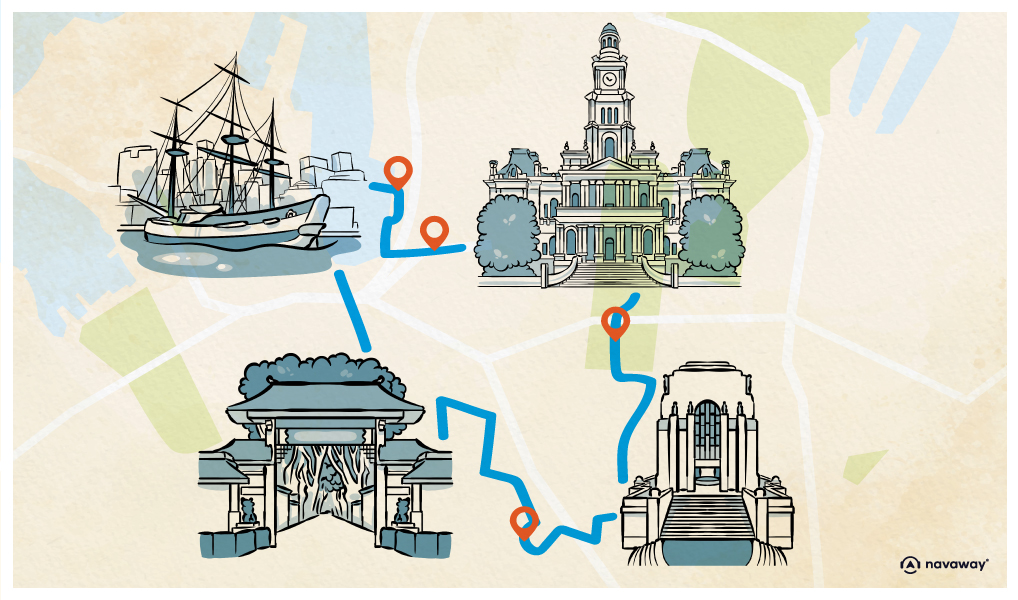
7. India: 3,287,263 km² of cultural diversity
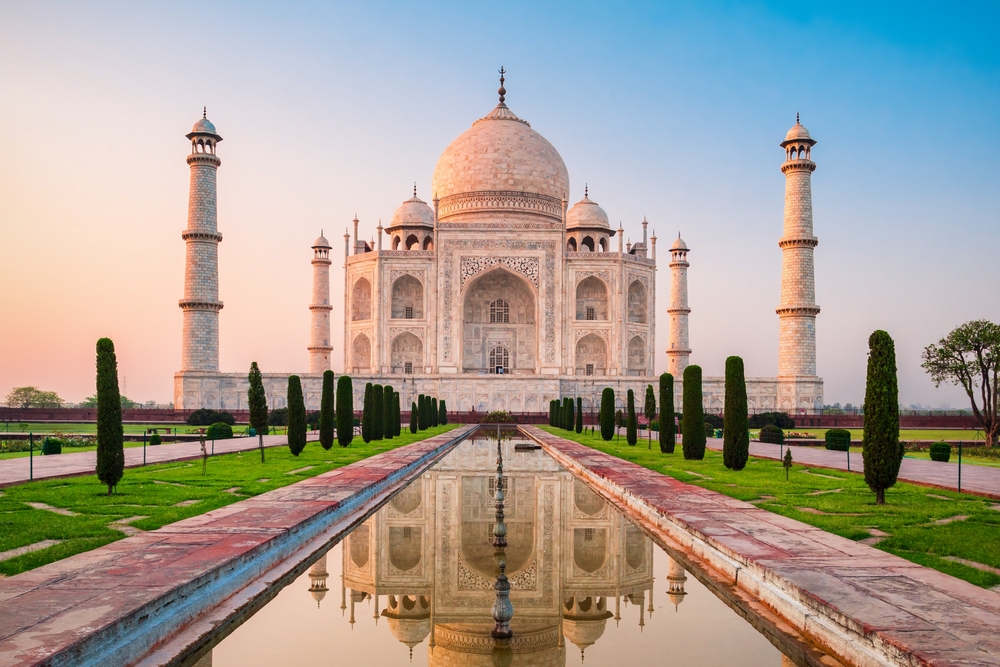
India occupies seventh position in this ranking of the world’s largest countries, with a surface area of 3,287,263 km², or 2.3% of the earth’s habitable surface. The land of the maharajas is also the second most populous country in the world, with more than 1.4 billion inhabitants, a population that should soon overtake that of China.
The Indian subcontinent has a varied geography: the Himalayas in the north, with peaks topping 8,000 metres, the fertile plains of the Ganges, the Thar desert in Rajasthan, the backwaters of Kerala and the beaches of Goa. From New Delhi, the political capital, to Mumbai (formerly Bombay), the economic and Bollywood capital, via Bangalore, India’s Silicon Valley, Calcutta, Jaipur the Pink City, and Varanasi, the sacred city on the banks of the Ganges, India marvels at its diversity. The Taj Mahal in Agra remains one of the most visited monuments in the world. This nation is undeniably one of the largest in the world, both in terms of surface area and cultural importance.
8. Argentina: 2,780,400 km² between the Andes and the Pampas
Argentina is the eighth largest country in the world, covering an area of 2,780,400 km². This South American nation stretches over 3,700 kilometres from north to south, from the Bolivian border to Tierra del Fuego, offering an exceptional variety of climatic and geographical conditions.
Argentina’s territory encompasses the Pampas, the vast agricultural and livestock plains that forged the country’s gaucho identity, southern Patagonia with its spectacular glaciers, the Iguazú Falls shared with Brazil, the Andes mountain range to the west with Aconcagua (America’s highest peak at 6,962 metres), and the Valdés peninsula on the Atlantic coast. Buenos Aires, the capital nicknamed the “Paris of South America”, vibrates to the rhythm of tango and football. Argentina has given the world two of the greatest players in the history of football: Diego Maradona and Lionel Messi. Argentina is undoubtedly one of the largest countries in the world in terms of surface area.
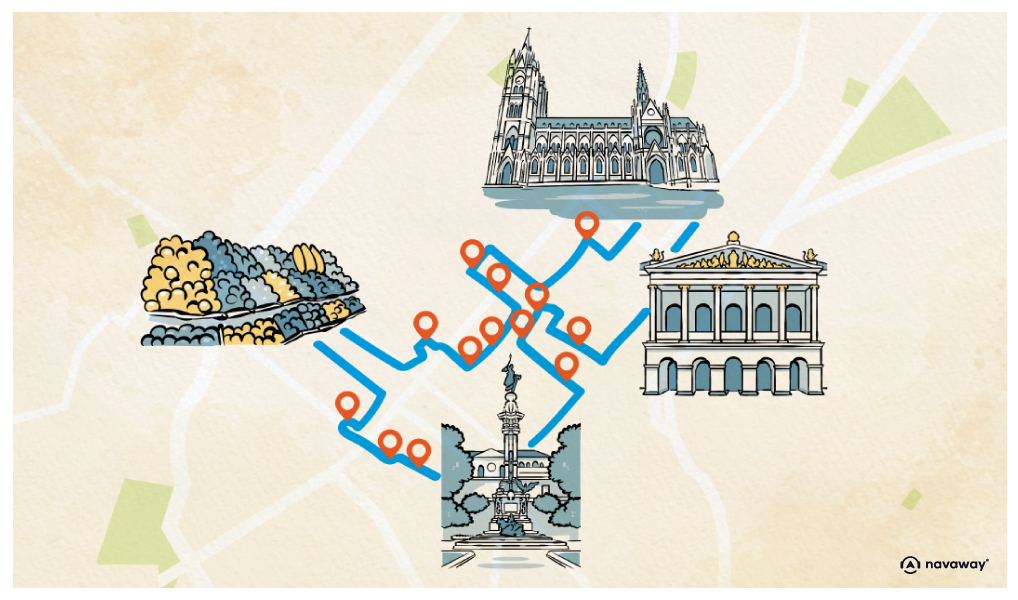
9. Kazakhstan: 2,724,900 km² of Central Asia
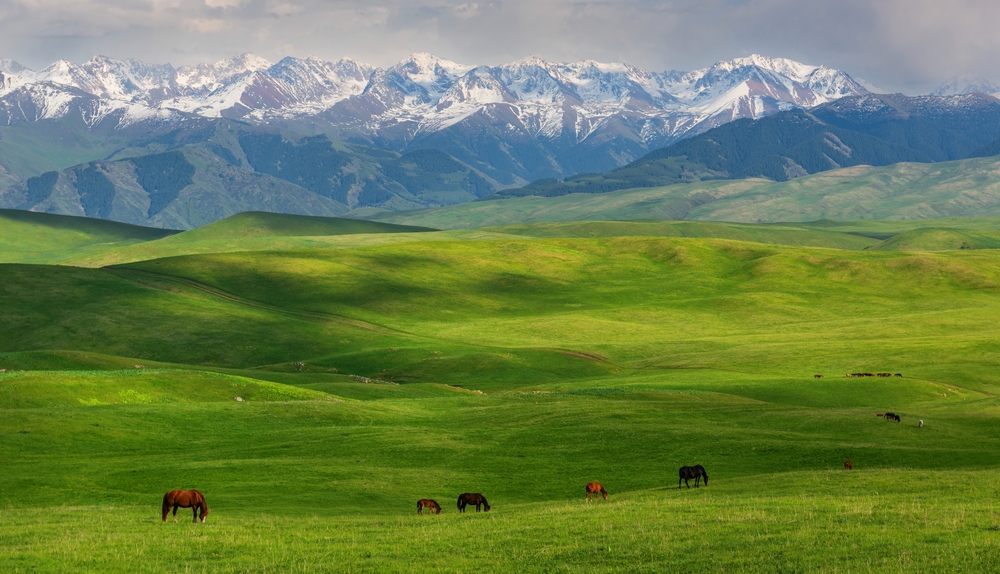
Kazakhstan is the ninth largest country in the world, with a total surface area of 2,724,900 km². This former Soviet republic, which became independent in 1991, is the largest landlocked country in the world, with no direct access to an ocean, although it does have a long coastline on the Caspian Sea.
The Kazakh territory is characterised by immense steppes, semi-arid desert in the south-west, the Tian Shan mountains in the south-east, and Lake Balkhach, one of the largest lakes in Asia. Rich in natural resources (oil, natural gas, uranium, precious metals), Kazakhstan has undergone significant economic development since its independence. Astana (renamed Nur-Sultan and then Astana again), the futuristic capital built on the steppes, bears witness to this transformation. Almaty, the country’s former capital and largest city, remains its cultural and economic heart. Despite its little-known position as a landlocked continent, Kazakhstan is undeniably one of the largest countries in the world.
10. Algeria: 2,381,741 km² of the Maghreb
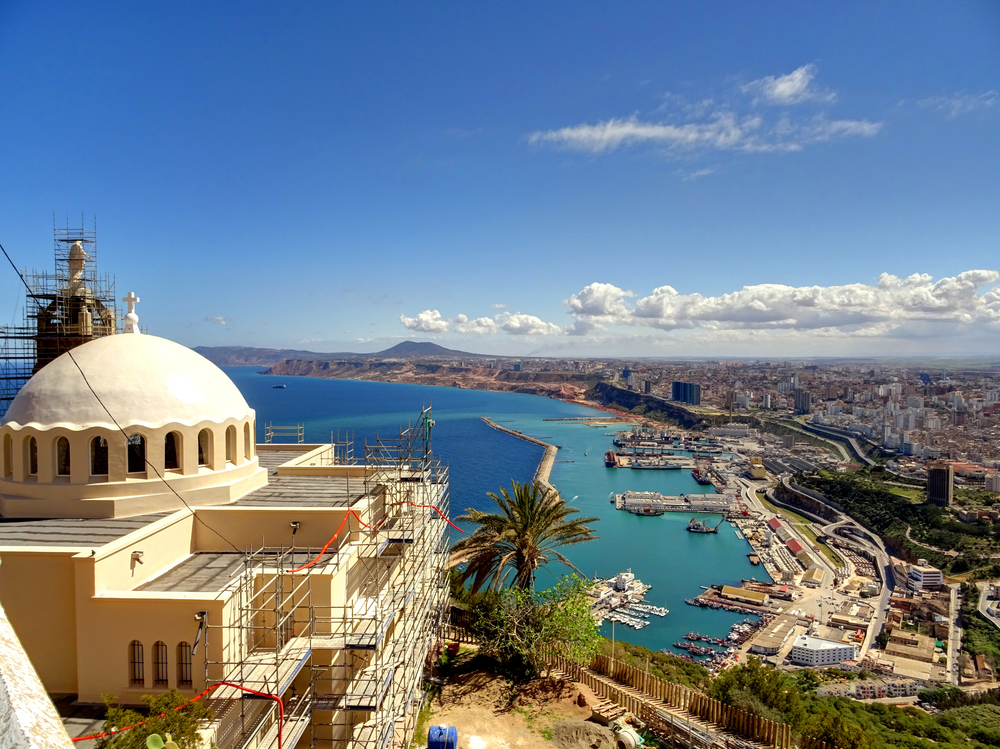
Algeria ranks tenth among the world’s largest countries, with a surface area of 2,381,741 km², or 1.6% of the Earth’s habitable surface. It also holds the title of largest country in Africa since the partition of Sudan in 2011, and in the Arab world.
Algeria is divided into two distinct geographical zones: the Mediterranean north, with its coastal towns and the Tellian Atlas, and the immense Sahara, which covers almost 80% of the country. There are architectural marvels inherited from the French colonial period, notably in Constantine, the city of suspension bridges, Oran, the Mediterranean port, and Algiers, the white capital perched on the hills overlooking the bay. The Algerian desert is home to the Tassili n’Ajjer National Park, a UNESCO World Heritage Site for its thousand-year-old cave paintings and spectacular rock formations. Algeria is one of the largest countries in the world, particularly on the African continent.
11. Democratic Republic of Congo: 2,345,409 km².
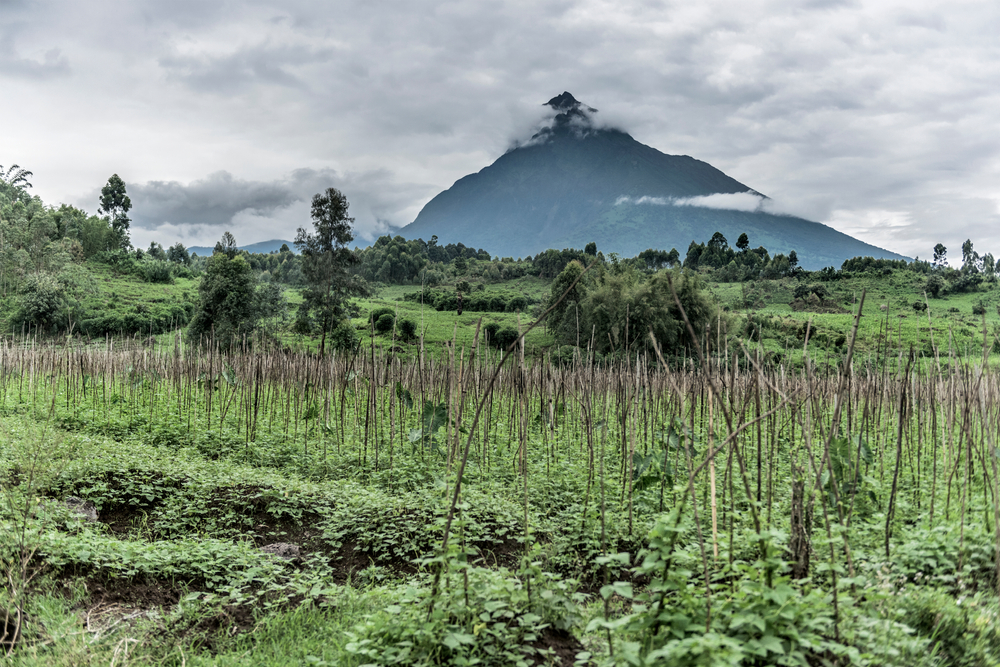
The Democratic Republic of Congo (DRC) is ranked eleventh in this list of the world’s largest countries, with a total surface area of 2,345,409 km². The second largest country in Africa after Algeria, the DRC plays a key strategic role in the world thanks to its exceptional mineral wealth.
The Congolese territory is home to more than 90% of the world’s reserves of coltan (used in the manufacture of computers and smartphones) and cobalt (essential for electric vehicle batteries). Without the DRC, the IT industry and the global energy transition would be considerably compromised. The country also boasts the world’s second largest rainforest after the Amazon, the Congo River (Africa’s second longest), and extraordinary biodiversity including mountain gorillas. Kinshasa, the capital and largest French-speaking city in the world after Paris, is a testament to the dynamism of this nation. The DRC richly deserves its place among the world’s great countries.
12. Denmark: 2,210,579 km² including Greenland
Denmark’ s inclusion in this ranking of the world’s largest countries may come as a surprise, but it is due to the inclusion of Greenland and the Faroe Islands in the Kingdom of Denmark. The total surface area is thus 2,210,579 km², making Denmark technically the largest country in Europe, ahead of Russia (if only the European part of the latter is counted).
Metropolitan Denmark accounts for just 43,094 km², but Greenland alone contributes 2,166,086 km² of mainly ice-covered territory, and the Faroe Islands add another 1,399 km². Copenhagen, the Danish capital, boasts an exceptional quality of life, Scandinavian architecture and the famous Nyhavn district with its colourful houses. The country is one of the world’s most advanced in terms of renewable energy and sustainable development. This geographical feature makes Denmark one of the largest countries in the world in terms of total surface area.

13. Saudi Arabia: 2,149,690 km² of Arabian desert
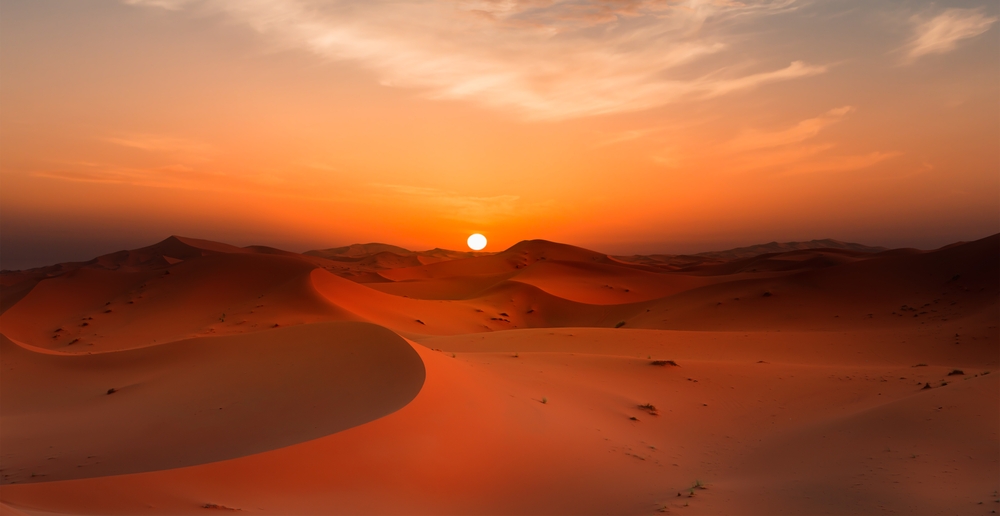
Saudi Arabia is the thirteenth largest country in the world, covering an area of 2,149,690 km². This Middle Eastern kingdom is the largest country on the Arabian Peninsula and plays a major geopolitical role, thanks in particular to its immense oil reserves.
Saudi Arabia is mainly made up of vast deserts, including the famous Rub al-Khali (the “Empty Quarter”), the largest continuous sand desert in the world. The country is home to Islam’s two holy cities: Mecca, the destination of the annual pilgrimage (Hajj) that brings together millions of Muslims, and Medina, where the Prophet’s mosque is located. Riyadh, the ultra-modern capital, symbolises the kingdom’s economic transformation with its Vision 2030 project. Jeddah, Mecca’s gateway to the Red Sea, is developing as a tourist destination. Modern Middle Eastern history is intimately linked to this country, which is one of the largest in the world.
14. Mexico: 1,964,375 km² between two oceans
Mexico ranks fourteenth in this list of the world’s largest countries, with a total surface area of 1,964,375 km². A bridge between North and Central America, this Spanish-speaking country fascinates with its cultural wealth inherited from pre-Columbian civilisations and Spanish colonisation.
The Mexican territory offers a remarkable geographical diversity: the paradisiacal beaches of Cancún and the Riviera Maya on the Caribbean coast, the Baja California peninsula bathed by the Pacific Ocean, the central highlands dominated by volcanoes, and the deserts of the north. Mexico City, one of the world’s largest megacities, built on the ruins of ancient Aztec Tenochtitlan, is home to over 21 million people in its urban area. The archaeological sites of Teotihuacan, Chichen Itza and Palenque bear witness to millennia-old civilisations. Mexico is one of the largest countries in the world, both in terms of surface area and heritage.
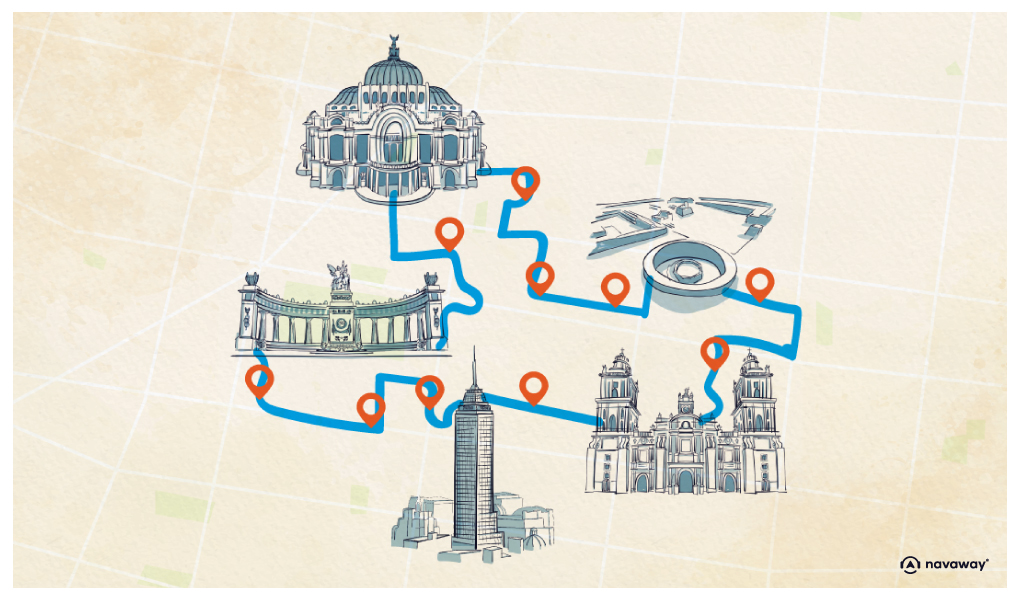
15. Indonesia: 1,904,569 km² of tropical archipelago
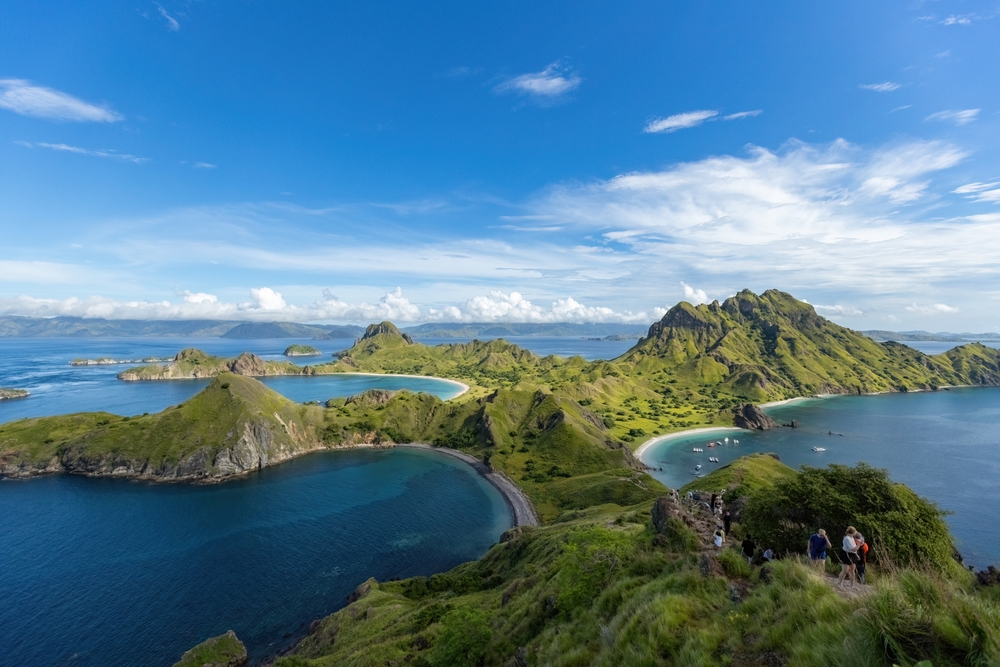
Indonesia is the fifteenth largest country in the world, covering an area of 1,904,569 km². This archipelago of more than 17,000 islands is the largest island state in the world and the fourth most populous country, with around 275 million inhabitants.
Indonesian territory stretches almost 5,000 kilometres from west to east, straddling the equator and linking the Indian and Pacific Oceans. The main islands include Java, home to the majority of the population and the capital Jakarta(currently being relocated to a new capital, Nusantara, in Borneo), Sumatra with its rainforests and orangutans, Bali the island of the gods popular with tourists, Borneo (shared with Malaysia and Brunei), and West Papua. Indonesia is home to exceptional biodiversity and is one of the world’s largest countries in South-East Asia.
16. Libya: 1,759,540 km² on the Mediterranean

Libya ranks sixteenth in this list of the world’s largest countries, covering an area of 1,759,540 km². Located on the Mediterranean coast of North Africa, Libya has the largest proven oil reserves on the African continent, making it a strategically important nation despite its political instability since 2011.
Over 90% of Libya’s territory is made up of the Sahara desert, including some of the most arid regions on the planet, such as the Libyan desert. The population is concentrated mainly along the Mediterranean coastline. Tripoli, the capital to the west, and Benghazi to the east, are the two main urban centres. The country is home to some remarkable Roman archaeological sites, notably Leptis Magna and Sabratha, which bear witness to the wealth of the Roman province of Africa. Despite contemporary challenges, Libya remains one of the world’s largest countries on the African continent.
17. Sudan: 1,861,484 km² of the Nile Valley

Sudan is the seventeenth largest country in the world, covering an area of 1,861,484 km² since the secession of South Sudan in 2011. Prior to this partition, Sudan was the largest country in Africa. Located in the north-east of the continent, it forms a bridge between sub-Saharan Africa and the Arab world.
The Sudanese territory is characterised by the Nile, the nourishing river that crosses the country from south to north, and by deserts that cover a large part of the north. Khartoum, the capital located at the confluence of the White and Blue Niles, is the centre of political and economic activity. The country is home to more than 200 Nubian pyramids in Meroe, bearing witness to an ancient civilisation that is little-known but fascinating. The Sudanese pyramids, more numerous than those of Egypt, are a reminder that this region was the cradle of the powerful kingdom of Kush. Sudan is one of the largest countries in the world, although it is often overlooked by tourists.
18. Iran: 1,648,195 km² of ancient Persia
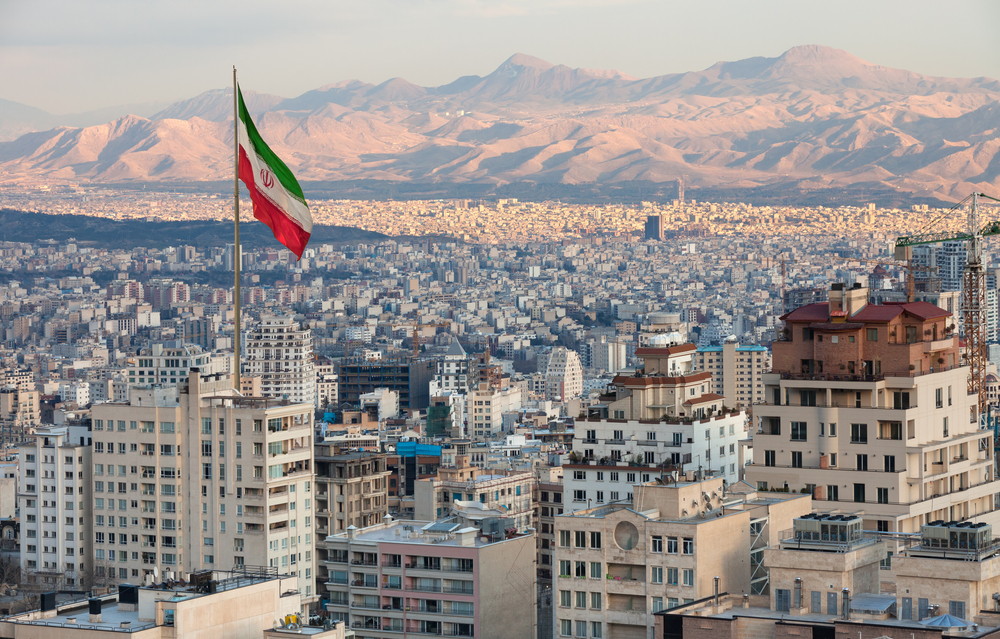
Iran occupies eighteenth position in this ranking of the world’s largest countries, with a surface area of 1,648,195 km². Formerly known as Persia, this Islamic republic is the second largest country in the Middle East after Saudi Arabia, and plays a major geopolitical role in the region.
Iran has a varied geography: the Zagros mountains in the west, the Elbourz range in the north with Mount Damavand (highest point 5,671 metres), the Dasht-e Kavir and Dasht-e Lut deserts in the centre, and the Persian Gulf coastline in the south. Tehran, the sprawling capital, is home to over 8 million people. The country boasts an exceptional historical heritage, with sites such as Persepolis, former capital of the Achaemenid Persian Empire, Isfahan with its turquoise-domed mosques, and Shiraz, city of poets and roses. Iran is undoubtedly one of the world’s great countries, heir to a civilisation that dates back thousands of years.
19. Mongolia: 1,564,116 km² of endless steppes
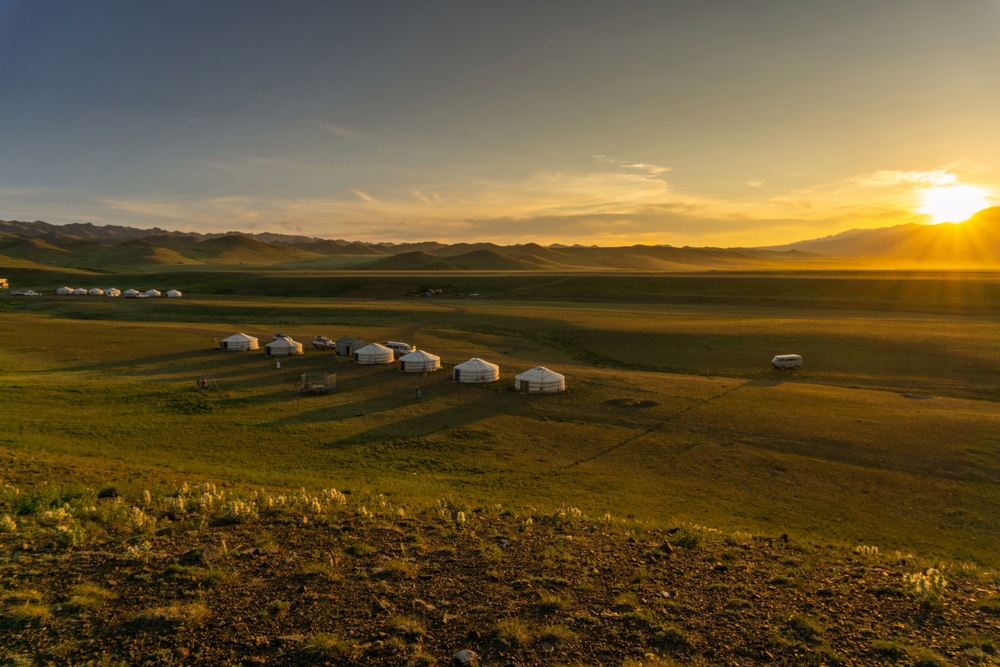
Mongolia is the nineteenth largest country in the world, covering an area of 1,564,116 km². This landlocked East Asian country, wedged between Russia to the north and China to the south, holds the title of the least densely populated sovereign state in the world, with an average of just 2 inhabitants per km².
Mongolia’s territory consists mainly of vast steppes grazed by horses, yaks and sheep, the Gobi Desert in the south (one of the world’s largest cold deserts), and mountain ranges in the west. Ulan Bator, the capital, is home to almost half the country’s total population (around 1.5 million out of 3.3 million). Mongolia immediately evokes the legacy of Genghis Khan, who in the 13th century built the largest continuous land empire in history. The country possesses large reserves of raw materials (copper, gold, coal, uranium) that fuel its economic development. Despite its low profile on the international stage, Mongolia is one of the world’s largest countries.
20. Peru: 1,285,216 km² from the Incas to the Andes
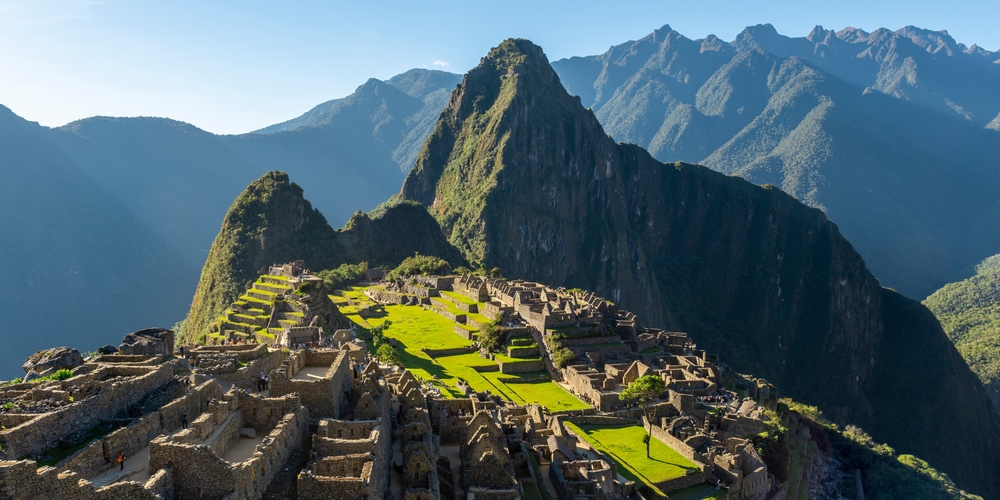
Peru completes this ranking of the 20 largest countries in the world, with a surface area of 1,285,216 km². The third largest country in South America after Brazil and Argentina, Peru is a land of exceptional cultural and natural wealth, a direct descendant of the Inca civilisation.
Peru is divided into three main geographical regions: the arid Pacific coast to the west, including Lima, the country’s capital and largest city; the Andes mountain range in the centre, with its snow-capped peaks and deep valleys; and the Peruvian Amazon to the east, which accounts for 60% of the country’s surface area. Peru is home to South America’s most emblematic archaeological site: Machu Picchu, an Inca citadel perched at an altitude of 2,430 metres and listed as a UNESCO World Heritage Site. Cusco, former capital of the Inca Empire, Arequipa, the White City, and Lake Titicaca (the highest navigable lake in the world at 3,812 metres) complete the list of must-sees. Peru brings the list of the world’s greatest countries to a fitting close.
Frequently asked questions about the world’s largest countries
What is the largest country in the world?
Russia is undoubtedly the largest country in the world, with a surface area of 17,098,242 km², representing 11.5% of the planet’s habitable surface. This territory stretches across two continents, Europe and Asia, crossing 11 time zones.
What are the 5 largest countries in the world by surface area?
The five largest countries in the world are, in order: 1) Russia (17,098,242 km²), 2) Canada (9,984,670 km²), 3) the United States (9,833,517 km²), 4) China (9,596,961 km²), and 5) Brazil (8,515,767 km²). These five giants alone account for around 40% of the planet’s land area.
What is the largest country in Africa?
Algeria is the largest country in Africa, covering an area of 2,381,741 km². It overtook Sudan after the secession of South Sudan in 2011. Algeria is also the largest country in the Arab world and the Mediterranean basin.
Is Denmark really one of the biggest countries in the world?
Yes, thanks to Greenland (an autonomous territory under Danish sovereignty), which adds 2,166,086 km² to mainland Denmark (43,094 km²) and the Faroe Islands (1,399 km²), the Kingdom of Denmark has a total surface area of 2,210,579 km², making it the 12th largest country in the world. Without Greenland, Denmark would not feature in this ranking.
How many times could France fit into Russia?
Russia is around 26 times larger than mainland France. To put this into perspective, France has an area of around 643,801 km² (including Corsica), while Russia covers 17,098,242 km². This vastness makes Russia the largest country in the world by a long way, overtaking the second largest (Canada) by more than 7 million km².
What is the difference in surface area between China and the United States?
The question of how China and the United States rank among the world’s largest countries depends on the method of calculation. According to the sources, the surface areas are very close: around 9,596,961 km² for China and 9,833,517 km² for the United States. The difference is mainly due to whether or not territorial waters are included in the calculation. The United States is generally ranked 3rd and China 4th.
In conclusion, this overview of the 20 largest countries in the world by surface area reveals the extraordinary geographical diversity of our planet. From the Siberian tundra to the Amazon forests, from the Saharan deserts to the Mongolian steppes, these terrestrial giants are home to a mosaic of landscapes, cultures and ecosystems that shape our world. From economic superpowers like the United States and China, to the wilderness of Canada and Australia, to the millennia-old lands of Iran and Peru, each of the world’s largest countries contributes to the richness of our global heritage. Collectively accounting for almost 60% of the world’s land mass, these twenty nations play a decisive role in the world’s geopolitical, economic and environmental balances. Their preservation and sustainable development are therefore major challenges for the future of humanity.
200 audioguided tours for cities all around the world
Download